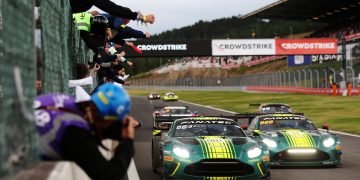
Carlos Sainz has bemoaned his opening stint in Sunday's Formula 1 Austrian Grand Prix, reasoning it left him on the back foot for the remainder of the race.
The Spaniard crossed the line fourth but was relegated to sixth once all the post-race track limits penalties were applied.
Sainz was one of a host of drivers to land a five-second time penalty after Aston Martin protested the result of the race.
However, the Ferrari driver reasoned that the root cause of his breaches stemmed back to the race's opening laps.
“I was very quick on the first and second stint,” he explained.
“Obviously the second stint was already compromised by the first stop; pitting behind Charles [Leclerc] and catching the Virtual Safety Car ending, which made me lose six, seven seconds of race time, made me lose positions to cars that I shouldn't have lost, which meant then I had to push on the medium to overtake them and get track limits.
“My race was compromised from that point onwards.”
In the opening laps, Sainz shadowed Leclerc, though the Ferrari pit wall never cleared him to pass his team-mate.
The deployment of the Virtual Safety Car for Nico Hulkenberg's Haas came at an awkward time for both, as they'd just passed pit entry.
They, therefore, had to complete an entire lap before taking to the lane.
By the time Sainz did, the Virtual Safety Car period had ended and the field had returned to racing speed.
It meant he lost out to those behind him who had stopped and gained the full benefit of the pack running at reduced speed.
In practical terms, it meant he fell behind Lewis Hamilton and Lando Norris in fifth.
However, by the time of his stop, Sainz had already picked up his first five-second penalty for track limits, with four breaches in the opening 17 minutes of the race.
That was served at his second stop, while another transgression soon after rejoining from his initial stop meant he picked up a 10-second post-race penalty.
Sainz revealed Ferrari headed into the Austrian Grand Prix with a game plan to maximise their podium chances.
“We had agreed before the race to work as a team in the first stint to open a gap to the cars behind,” he explained.
“So they didn't want to fight; I followed their plan even though I had quite a bit of pace and I was quite comfortable there – probably could have passed.
“It's a shame that after doing the teamwork, the pit stop arrives and you're compromising…”
While Sainz was left disappointed with his result, it was a positive display from Ferrari.
Leclerc capitalised on his front-row starting position to finish a season's best second with both Prancing Horses displaying good pace.
Sainz played a vital role in the podium result, scrapping with a rapid Sergio Perez in the closing laps and delaying the Red Bull driver.
On course to run down Leclerc had he cleared the Spaniard quickly, the delay safeguarded second for the Monegasque.
Ferrari's Austrian Grand Prix performance can therefore be viewed as both positive and promising, despite the vagaries of Sainz's race.
Moreover, it comes after a similarly positive Canadian Grand Prix, where Sainz and Leclerc recovered from lowly grid slots to score solid points.
A new front wing and floor tweak in Austria helped their cause, suggesting developments are taking the SF-23 in the right direction.










































